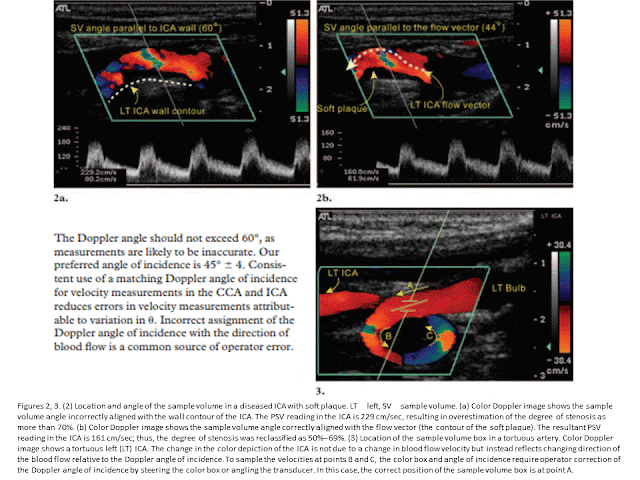Conclusions
Carotid US offers a noninvasive evaluation of the extracranial neck portions of the carotid and vertebral arteries for atherosclerotic disease. Standardized technical parameters, scanning methods, Doppler analysis, and interpretation enhance the accuracy and reproducibility of the results.
Abstract
Ultrasonography (US) of the carotid arteries is a common imaging study performed for diagnosis of carotid artery disease. In the United States, carotid US may be the only diagnostic imaging modality performed before carotid endarterectomy. Therefore, the information obtained with carotid US must be reliable and reproducible. Technical parameters that can affect the accuracy of carotid US results include the Doppler angle, sample volume box, color Doppler sampling window, color velocity scale, and color gain. Important factors in diagnosis of atherosclerotic disease of the extracranial carotid arteries are the intima-media thickness, plaque morphology, criteria for grading stenosis, limiting factors such as the presence of dissection or cardiac abnormalities, distinction between near occlusion and total occlusion, and the presence of a subclavian steal. Challenges to the consistency of carotid US results may include lack of a standard protocol, poor Doppler technique, inexperience in interpretation of hemodynamic changes reflected in the Doppler waveform, artifacts, and physical challenges. Hindrances in the classification of problematic carotid artery stenoses may be overcome by following a standard protocol and optimizing scanning techniques and Doppler settings.
© RSNA, 2005







Không có nhận xét nào :
Đăng nhận xét